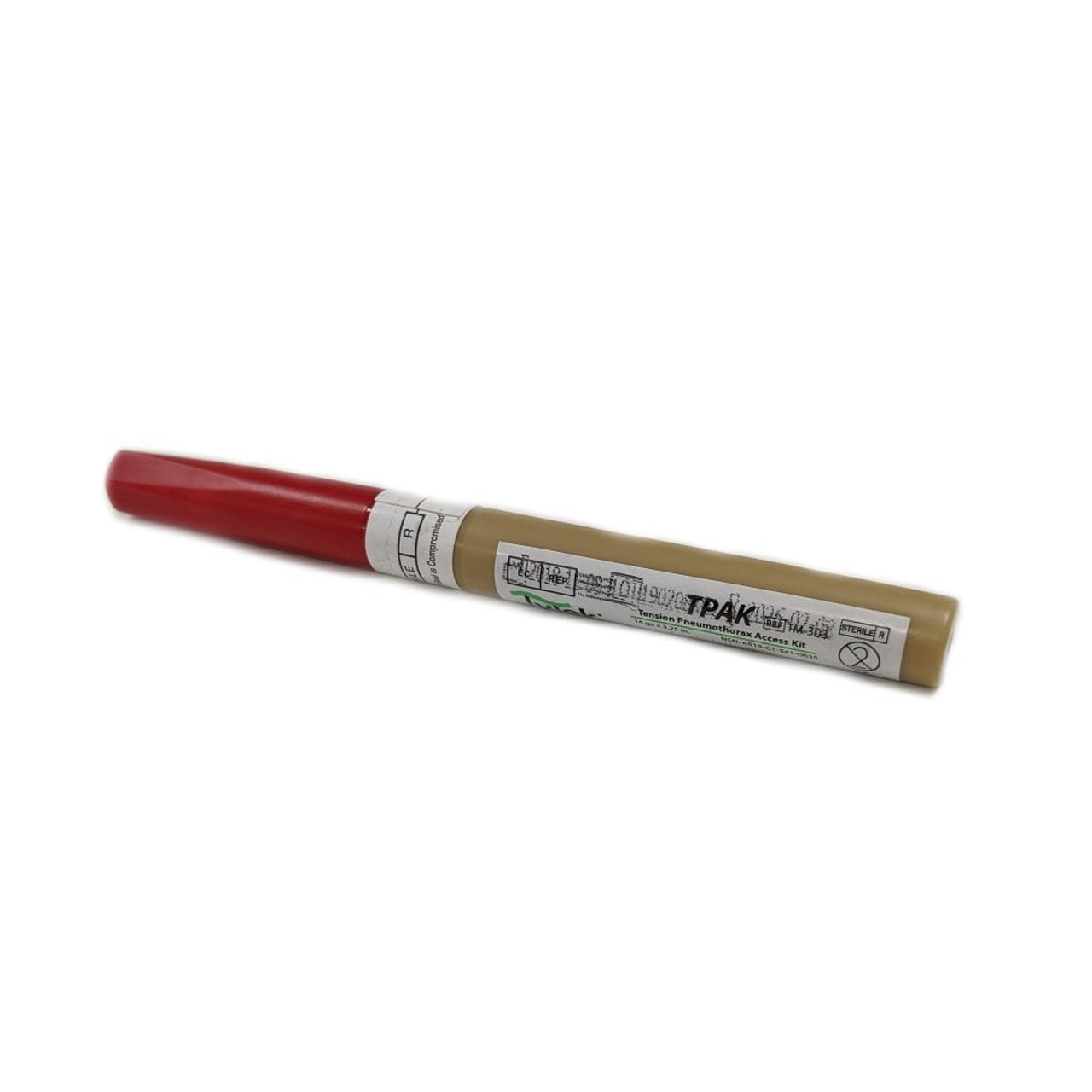Is the TPAK (Tension Pneumothorax, Airway, and Needle Decompression) part of your Medical Kit?
Posted by DS Medical on 17th Nov 2023
In the world of emergency medical care, having the right tools at the right time can mean the difference between life and death. One such tool that has revolutionized the way medical professionals handle life-threatening situations is the TPAK needle. TPAK, short for Tension Pneumothorax, Airway, and Needle Decompression, is a procedure designed to alleviate tension pneumothorax swiftly and effectively. Including a TPAK needle in medical kits has proven to be a game-changer, offering a multitude of benefits that can significantly impact patient outcomes.
1. Rapid Response to Tension Pneumothorax:
Tension pneumothorax is a critical condition where air accumulates in the pleural space, causing the lung to collapse and putting pressure on vital organs. The TPAK needle allows medical professionals to perform needle decompression swiftly, releasing the trapped air and relieving pressure on the lungs. This rapid response is crucial in preventing respiratory failure and ensuring the patient receives adequate oxygenation.
2. Portability and Ease of Use:
TPAK needles are compact and lightweight, making them highly portable and easy to include in medical kits. Their simplicity of use, combined with clear anatomical landmarks for insertion, allows medical professionals to perform the procedure quickly and efficiently, even in high-stress situations. The user-friendly design ensures that healthcare providers, including paramedics and military medics, can administer life-saving treatment with confidence.
3. Improved Patient Outcomes:
Including a TPAK needle in medical kits directly contributes to improved patient outcomes. By promptly addressing tension pneumothorax, medical professionals can stabilize patients, prevent further complications, and increase the chances of survival. The TPAK needle is a valuable tool in emergency situations, enabling medical teams to buy precious time until more definitive treatments, such as chest tube insertion, can be performed.
4. Versatility in Various Settings:
TPAK needles are versatile and find applications in diverse settings, including emergency rooms, ambulances, and military operations. Their presence in medical kits ensures that medical professionals are equipped to handle tension pneumothorax in any environment, be it a civilian emergency or a battlefield scenario. This adaptability makes TPAK needles indispensable tools for healthcare providers working in different capacities.
5. Standardized Training and Protocols:
The inclusion of TPAK needles in medical kits encourages standardized training and protocols among healthcare professionals. Training programs ensure that medical personnel are proficient in the correct usage of the TPAK needle, promoting consistency and reliability in its application. Standardized protocols also enhance communication and coordination among healthcare teams during emergency situations.
Conclusion:
Incorporating TPAK needles into medical kits is a proactive step toward enhancing emergency medical care. Their rapid response capabilities, portability, ease of use, and versatility make them invaluable assets in the hands of medical professionals. By ensuring that TPAK needles are readily available, healthcare providers can continue to save lives, providing critical intervention in the face of tension pneumothorax. As technology and medical practices continue to advance, the TPAK needle remains a beacon of hope, symbolizing the relentless pursuit of improving patient outcomes and ensuring a safer world for all.



